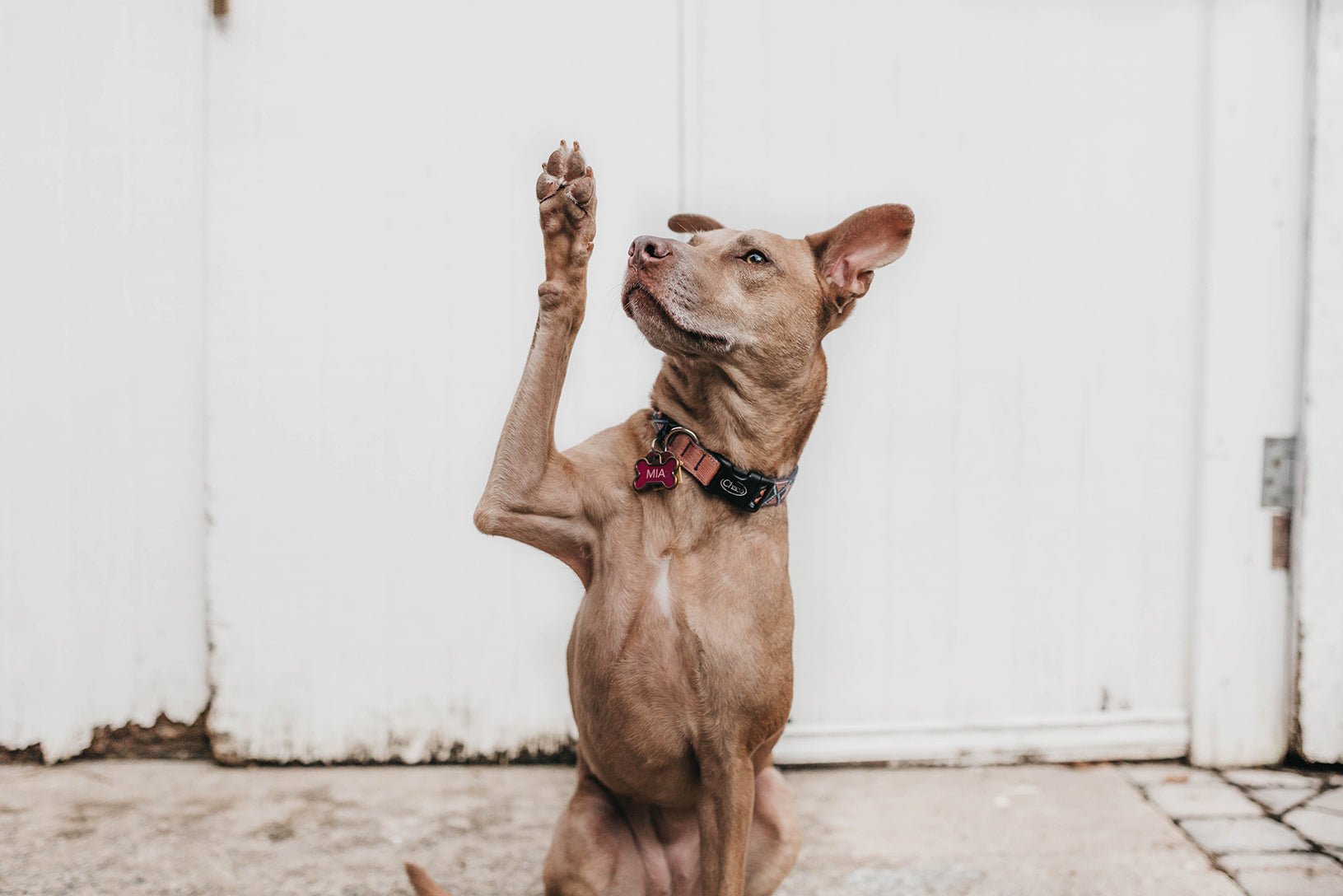A Brief Guide to Canine Body Language: How to Understand Your Dog
- by Andrea Nunez
-

It’s important to understand your dog’s body language so that you can reduce the things that scare or worry them, and increase the things that make them happy. Understanding your dog’s signals and behaviours will mean that you can react quickly if they are stressed or angry to remove them from the situation or to calm them down.
Read on to find out how to read your dog’s body language to understand their mood and react accordingly.
How do dogs express themselves?
When looking at a dog’s body language, you need to look at everything, from the dog’s face all the way to their tail. This includes their facial expressions, eye contact, nose and mouth, torso, posture, legs and tail. All of these together can help to paint a picture of whether a dog is scared, anxious, stressed, angry, content or happy.
Signs that a dog is worried or stressed
These signs indicate that your dog may be anxious, nervous, stressed, worried or uncomfortable:
- Low body posture
- Low head position
- Tucked tail
- Ears pushed back
- Yawning
- Avoiding eye contact
- Lip or tongue licking
- Body freezing
- Curved brows and facial tension
- Tense jaw
- Dry-sounding panting
- Whisker twitching
- Shaking
- Sweaty paws
- Pacing
- Whites of the eyes showing
How to calm down a dog when it is stressed
It’s normal for a dog to feel stressed sometimes, and it’s a good idea to learn their stress indicators so that you can respond accordingly. Some things you can do to reduce your dog’s anxiety include giving them space, away from other animals and children. A crate is a good way of doing this.
In addition, exercising your dog is another good way of reducing their worried behaviour, as well as keeping them physically fit. Try to keep calm yourself, as your dog will be in tune with your emotions and may be more inclined to feel stressed if you are panicking.
Avoid telling off your dog when they are showing stressed behaviours, as this can make the situation worse. Don’t raise your voice, and instead play with them to distract them and keep them calm.
Signs that a dog is angry or unhappy
These are signs that your dog may be unhappy, uncomfortable or distressed:
- Stiff body posture
- Weight forward
- Ears up
- Eye contact made
- Large, dark pupils
- Stiff tail
- Wrinkled nose
- Hair raised
- Exposed teeth
- Lips drawn back
- Snarling
- Air snapping
- Biting
What to do when a dog is angry or unhappy
If your dog is unhappy and is beginning to show signs of becoming aggressive, stop whatever it is that you are doing. It is likely that something in particular has caused this response, and so it is best to stop it right away before your dog gets unhappier.
Keep calm in this situation, and speak softly. Don’t raise your voice, and move slowly and calmly to make the dog feel more at ease. Avoid prolonged eye contact, and make sure your body language isn’t imposing or confrontational. Back away from the dog if they are becoming aggressive, and give them space to calm down.
Signs that a dog is happy or content
These signs indicate that your dog is in a good mood, is happy, calm and content:
- Relaxed posture
- Smooth hair
- Open mouth
- Relaxed ears
- Wagging tail
- Excited barking
- Weight evenly distributed
- Interested facial expressions
- Relaxed tongue
- Turning over onto their back
- Blinking eyes
Sustainable pet supplies by Nina Woof
If you’re looking to spoil your pet pooch, check out the sustainable pet supplies available from Nina Woof. Our vegan leather dog collars and leashes will make a fantastically premium addition to your pet’s wardrobe, and our compostable dog waste bags are super convenient for the environmentally-conscious dog owner.





